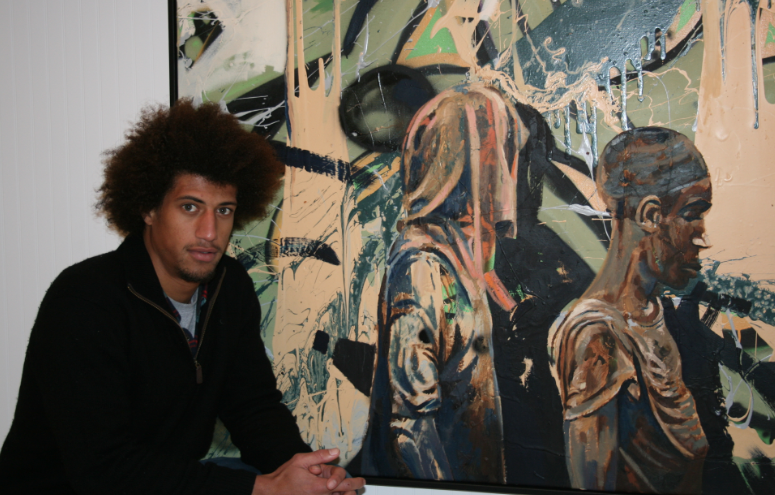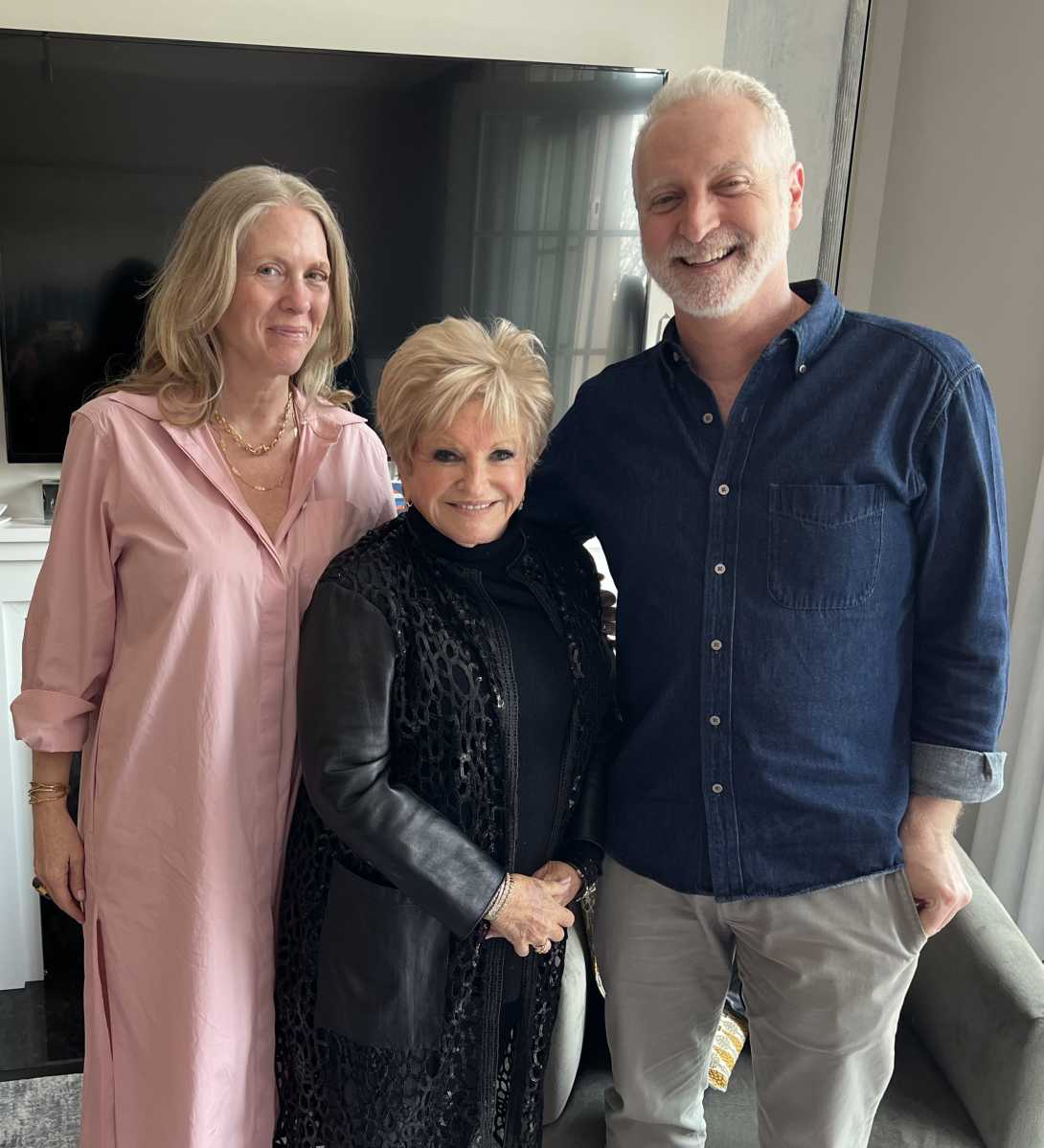Who's Here: Tripoli Patterson, Curator

Born in Sag Harbor, 27-year-old gallerist Tripoli Patterson of Tripoli Gallery in Southampton comes from a family of artists, and he developed an appreciation for art and creative expression at an early age. His father, Leonardo Patterson, is a world-renowned collector of pre-Columbian art whose famous cohorts have included Willem de Kooning and Salvador Dali. Tripoli’s mother Terry Patterson is also a painter and a good friend of Lisa de Kooning, who has exhibited at Patterson’s gallery.
A true East Ender, Patterson is in touch with and inspired by the Hamptons community, as he makes a definitive name for himself in the art world. In addition to owning the gallery, Patterson has produced private shows in New York City, as well as a benefit and silent auction for Planned Parenthood at the Bridgehampton Surf Club which raised over $200,000. Patterson acknowledges that if he were permanently based in New York, his work and shows may have been more difficult to find. [expand]
Patterson, who resides in Bridgehampton, ultimately hopes that the work inside his gallery challenges everyone to think differently. As a surfer, he knows how easy it is to become single-minded in pursuit of a goal, and Patterson likes to encourage all who enter Tripoli Gallery to stimulate themselves intellectually through art.
However, it is his laidback surfer’s attitude and quiet drive to succeed that have brought his gallery to fruition. Ironically, both of his signature qualities manifest themselves as he goes over his 2011 tax records.
“I use taxes as a way to reflect on my year, think of what I have done and what I hope to accomplish,” explains Patterson, who began producing art shows in 2004 and opened Tripoli Gallery on Job’s Lane in 2009 at age 24.
“I put shows on for everyone,” says Patterson. “Collectors, intermediate school kids—I want young generations to be inspired by the creative process.”
He also enjoys fostering conversation between artists. Patterson sees Tripoli Gallery as a commune of visionaries, and he relishes how the creativity flows between artists who work with a variety of styles and mediums when they meet at his shows. Artists are exposed to not only a group of potential buyers, but also to other artists whose work may further inspire their own.
“I want the artists to feel a part of a movement of creative people,” Patterson explains. “When you’re amongst creative people, creativity starts flowing. It creates conversations, which is important for artists as they develop their work.”
Patterson’s overall mission is to find artists that he has faith in and expose their work to his clientele. “I like to encourage up-and-coming artists to put themselves in the spotlight,” he says.
While artistic inclinations and conversations always ebbed and flowed through Patterson’s life, it is interesting to note he is not an artist in the classical sense of the word. He chooses to express his creativity through the shows he curates and through his surfing, which has been a major part of his life since he was eight years old. The natural and dynamic structures of the waves are a work of art, and every surfer has a unique way of carving through the curls.
Patterson began to pursue professional surfing at the age of 10, when he moved to Bali, Indonesia with his mother and three siblings. Though the family—and Tripoli in particular—have always considered Long Island’s East End their home, Terry wanted her children to be able to have eye-opening encounters and experiences with cultures outside of the United States. The experienves further Patterson’s surfing career. He competed for the New York State surf team prior to the moves, and he continued to hone his skills abroad.
While surfing motivated the move to Bali, and five years later a move to New Zealand, the experiences and his artistically trained mind helped Patterson to embrace the beauty of different lands and customs.
“My eyes are trained to see art while traveling,” explains Patterson. He used his artistic knowledge to better understand his new foreign locales, but it also made him realize that he needed an additional mental challenge outside of surfing.
“Surfing is a very individual sport, and I have always been a people person. I knew I wanted to work with people,” explains Patterson. “It’s interesting to see how people come to be who we are.”
Turning to art in the Hamptons was both a natural and practical transition. Patterson moved back to the Hamptons in 2004 and pursued freelance art curating, as he rented out various spaces and put on month-long shows. Now, his gallery allows him to develop and mature relationships with artists, as he displays and promotes their work.
It is Patterson’s obvious passion for people that makes him a true proliferator of the arts and a success in an East End art world inundated with creative-types.
Patterson displays an acute knowledge of the work he shows, and he spreads that information with all who want to hear it. He truly gets to know an artist before he invites them to display their art, and he continues to develop that relationship throughout their parallel careers. He has worked to develop a repertoire with a select group of collectors that he hopes will be with him for the long term.
But, there is always room for improvement. Possessing a seemingly contradictory personality that is both outgoing and contemplative, Patterson likes to take his time to slowly and positively identify new artists.
“The right things always end up coming to me, but I have to really quiet my mind,” asserts Patterson.
His most notable “right” idea for Tripoli Gallery may have been his first—to host a Thanksgiving show. On display through the end of January, the exhibit has become a popular annual event, and it features work from a combination of new and repeat artists.
Patterson revels in the fact that the Thanksgiving Collective, which began on Nov. 26, is at the end of the year, as it allows him to mentally bring himself completely back to his East End roots after the hectic summer season.
“It’s a lot like doing my taxes,” he laughs. “The Thanksgiving show brings me back to where I started from and allows me to reflect backwards and also evaluate where I want to go.”
Wherever that is, it’s clear that becoming a dynamic presence in the East End art world is no longer a surfer’s pipe dream.



